Got mounds of tomatoes from your garden this season? Lucky you!
If you’ve run through the whole gamut of tomato recipes, from tomato sauce (with the skins on!) to sun-dried tomatoes (made fast and easy in the oven), and you’re pretty sure you don’t want to eat another tomato again—at least, not until winter when you start missing what a real, ripe tomato should taste like—I’m bringing you the best and easiest way to save your tomato harvest this year.
No canning. No blanching, peeling, pureeing, or any extra work required on your part. You don’t even have to slice or dice them!
If you have the freezer space, you have everything you need to preserve tomatoes without the hassle of a boiling water bath or pressure canner.
Yes, I’m talking about freezing tomatoes—whole!
When most people think about preserving their food, they think jams, jellies, chutneys, pickles, and other canned goods. But freezing is often overlooked as a viable preservation technique, even though it’s one of the quickest and easiest to pull off.
You may have never thought about freezing your tomatoes, but it’s my favorite method of preserving them because it gives me more options for using them later.
Freezing whole tomatoes also locks in all those good-for-you nutrients found in the skins, so you’re not being lazy at all—just efficient and smart.

What kind of tomatoes can you freeze whole?
Depending on what you plan to make with your tomatoes later, the variety of tomato you freeze matters.
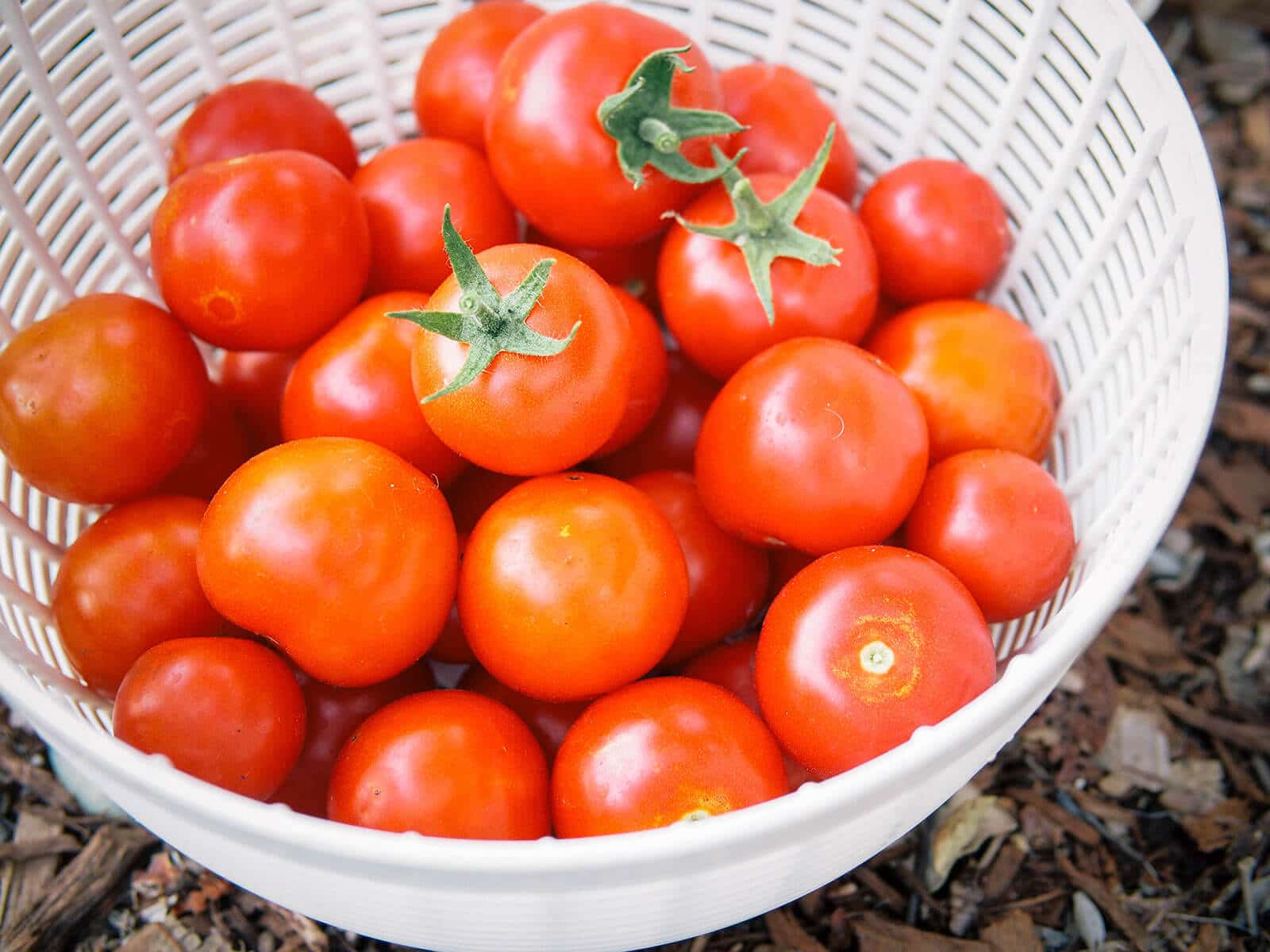
Cherry tomatoes and grape tomatoes are my personal favorites to freeze because they’re simple to store and take up little space (a plus if all you have is a small freezer or side-by-side fridge/freezer model). You can throw them into soups as is, or partially defrost and then roast them in the oven with a little olive oil, salt, and pepper.
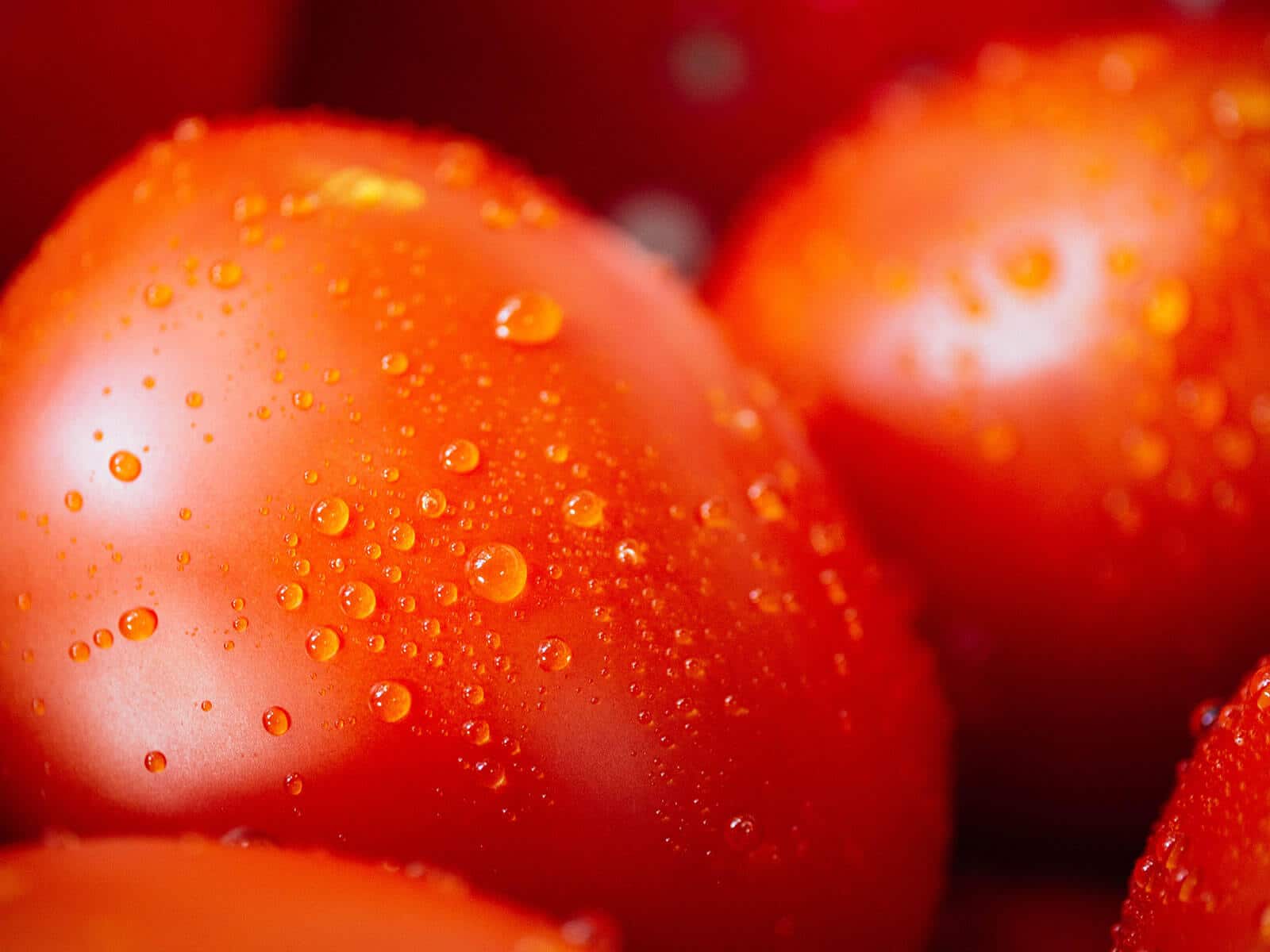
Plum tomatoes (like Romas) and other paste types (like San Marzanos) freeze well and hold their shape after thawing. They’re easy to slice and can be used in cold salads (think noodle salads and pasta salads) where they soak up sauces and dressings. (Tip: I also like to add them to my spicy tomato sauce when I want a chunkier consistency.)
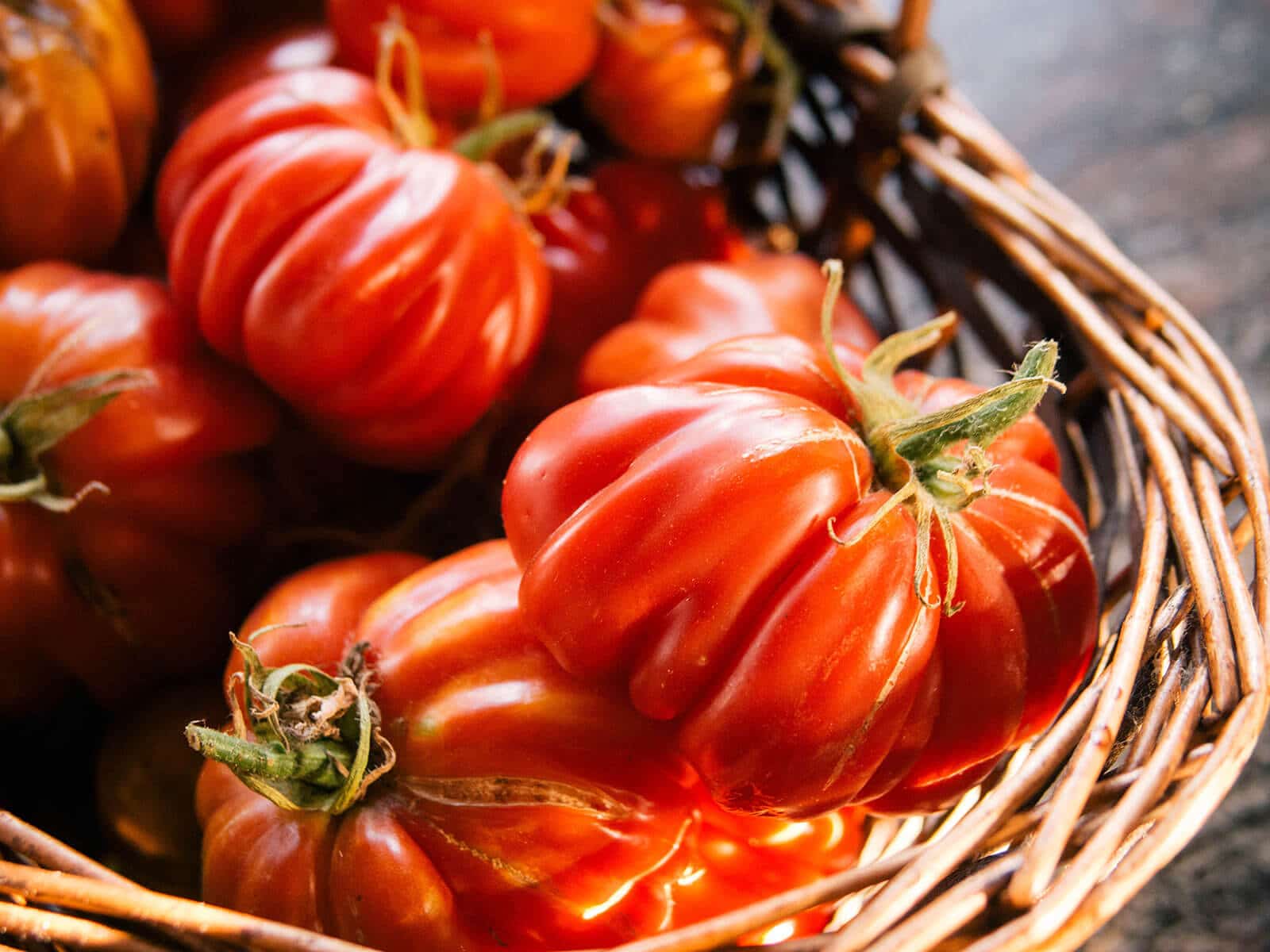
Beefsteaks and slicing tomatoes are thick and full of juice, so they tend to collapse after thawing and melt into a dish as they’re cooking. Use them in recipes that call for stewed or crushed tomatoes, such as chili (and other hearty stews) or pasta bolognese. I also like them for homemade tomato sauce or tomato soup.
Read more: The 30 Best Tasting Heirloom Tomato Varieties (By Color!)
Whichever variety of tomato you freeze, make sure the fruits are free of blemishes and bruises, and are as ripe as possible for best flavor.
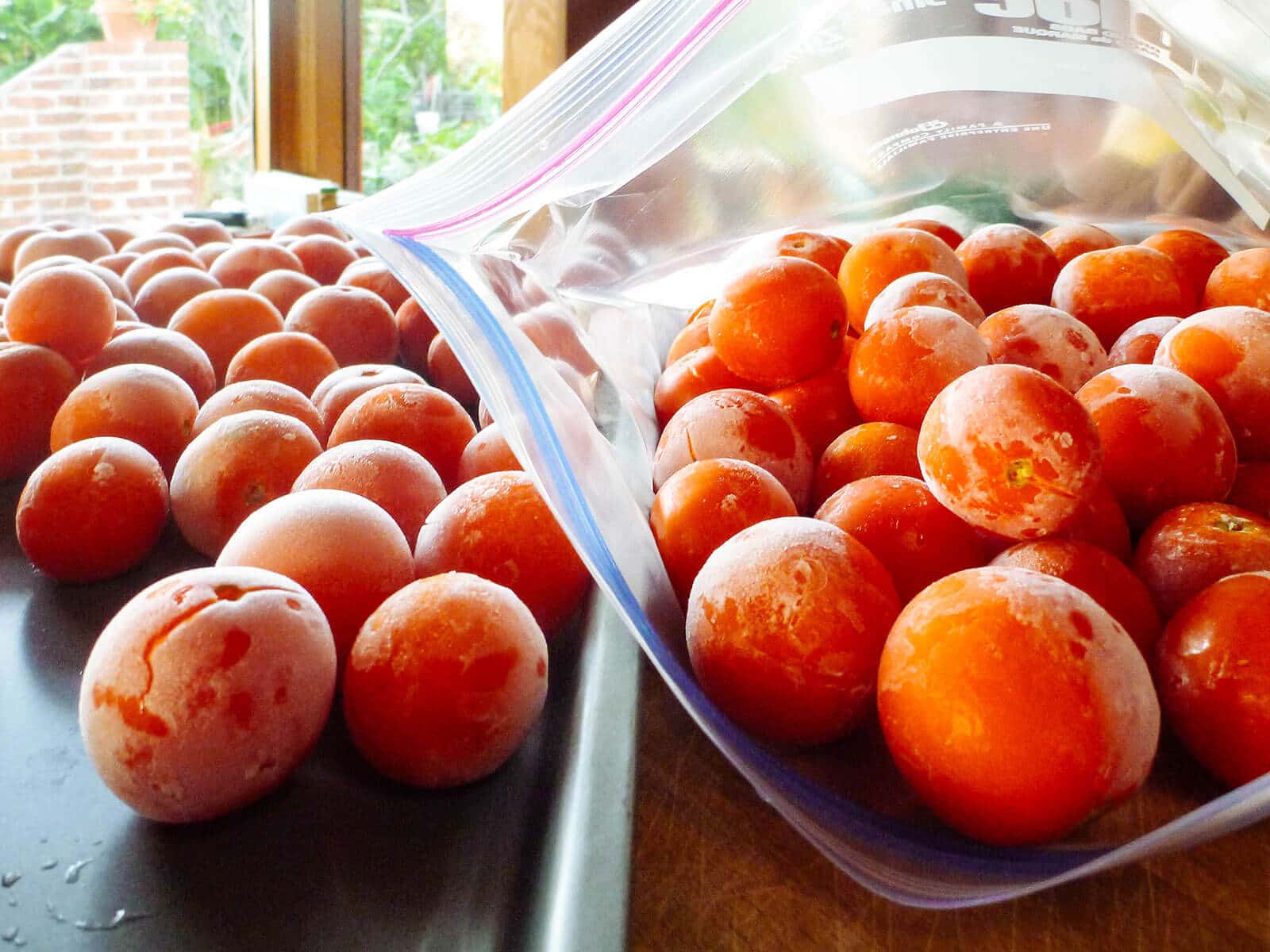
Does freezing affect flavor?
Storing tomatoes in the fridge or freezer does affect flavor. The volatile compounds responsible for giving tomatoes their distinctive flavors (those that we attribute as sweet, smoky, or tangy) are sensitive to temperatures below 53°F.
Cold storage hampers the enzymes that help synthesize these volatile compounds in tomatoes, so while your fruits will have a longer shelf life, the trade-off is a reduction in flavor.
However, the loss in flavor is less noticeable in frozen tomatoes because you’re not eating them fresh off the vine. Compare the taste of a supermarket tomato with a vine-ripened homegrown tomato that was frozen, then thawed (in a sauce or soup, for example), and the homegrown tomato wins every time.
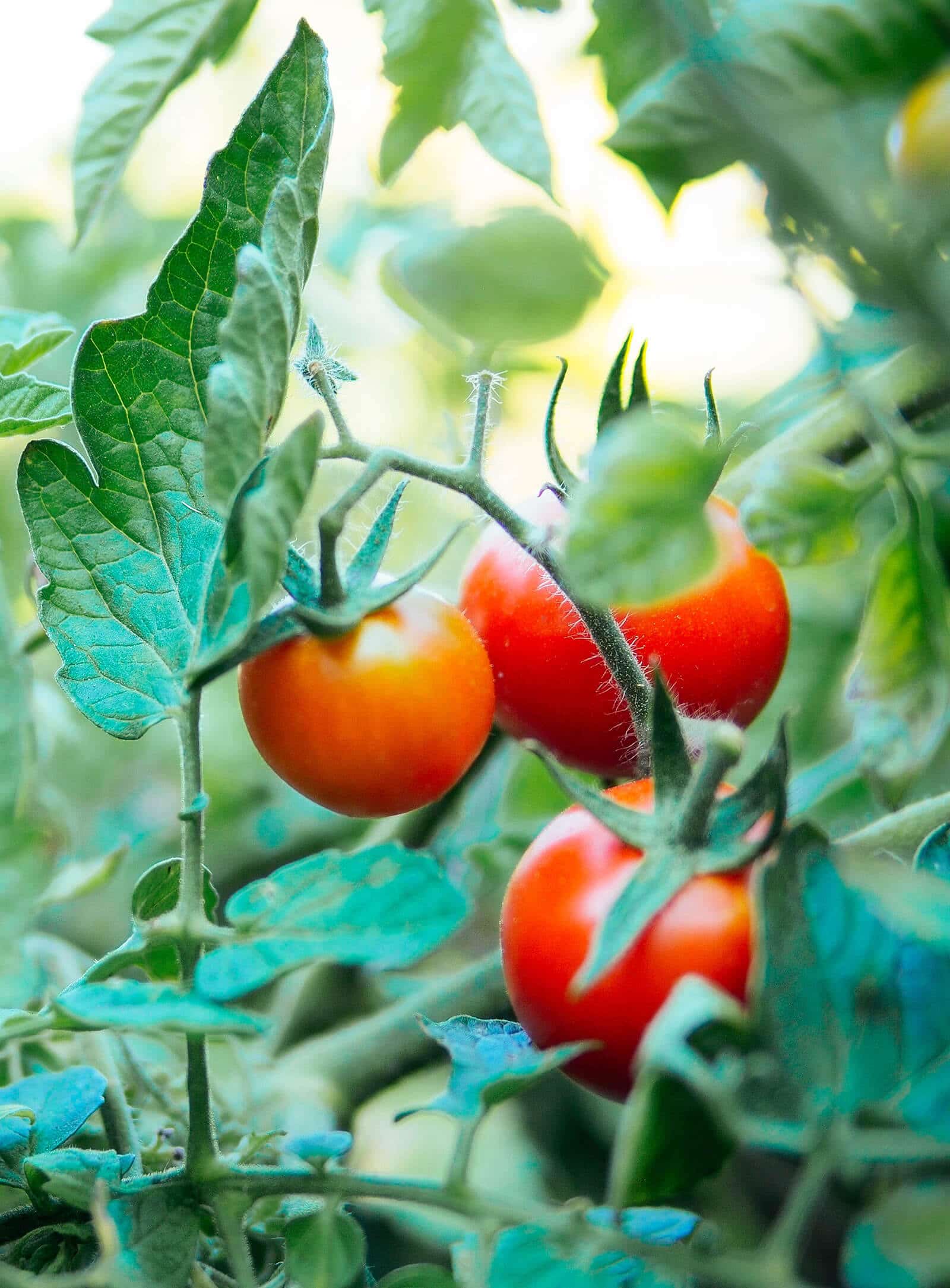
Disclosure: If you shop from my article or make a purchase through one of my links, I may receive commissions on some of the products I recommend.
How I freeze tomatoes—the easy way
Destem, wash, and dry your tomatoes whole, then spread them out in a single layer on a baking sheet.
Place the baking sheet in the freezer until the tomatoes are frozen all the way through. This may take anywhere from 2 to 4 hours, depending on size.
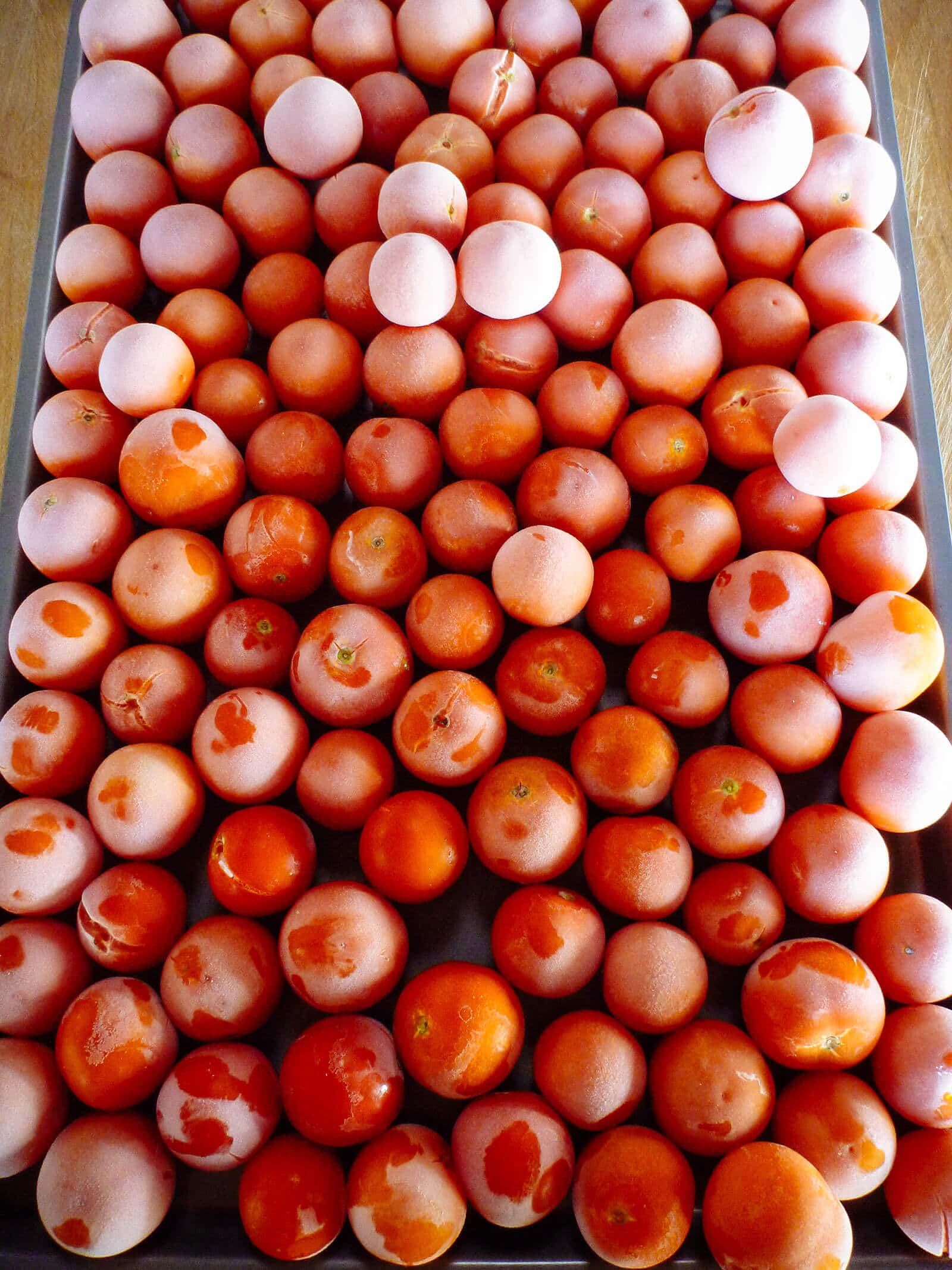
Once the tomatoes are rock hard, transfer them to a freeze-proof container or bag and put them back in the freezer.
(Depending on how much space I have, I like to use plastic food containers or silicone storage bags.)
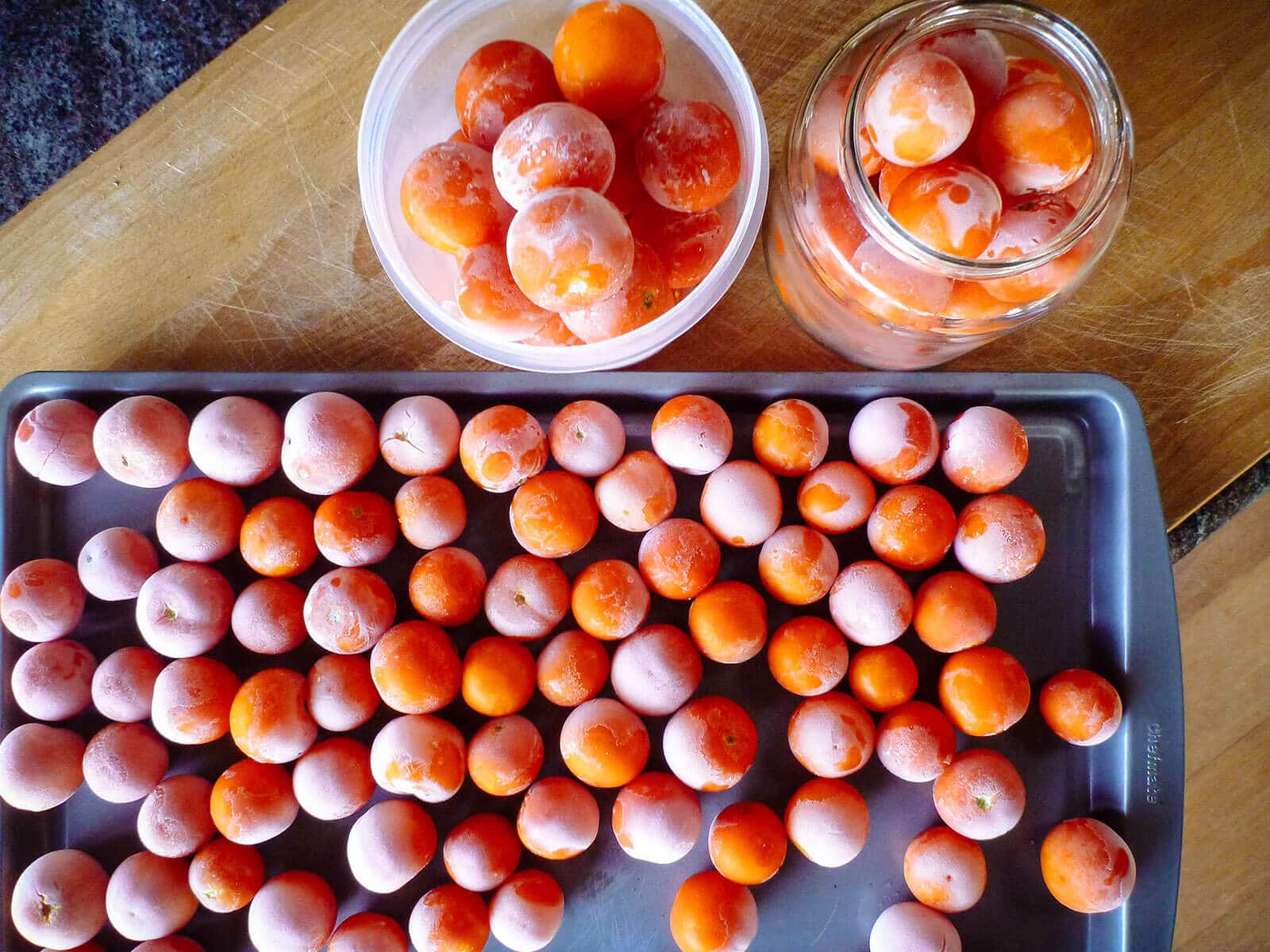
By doing it this way (instead of just tossing all your tomatoes into bags right away), your tomatoes won’t freeze together into one big clump. Sure, you might have to whack them around a bit if they’ve been frozen for a long time, but you won’t need to thaw out the entire bag just to use a few.
When you need fresh tomatoes in the middle of winter for your soups and stews, pull out as many as you need to thaw and return the rest to the freezer.

How long can you keep fresh tomatoes in the freezer?
When stored in an airtight container or freezer bag, frozen tomatoes will keep in the freezer for up to six months.
Always return any unused tomatoes to the freezer immediately, because once they start thawing, the moisture will cause your tomatoes to stick together in the jar or bag.
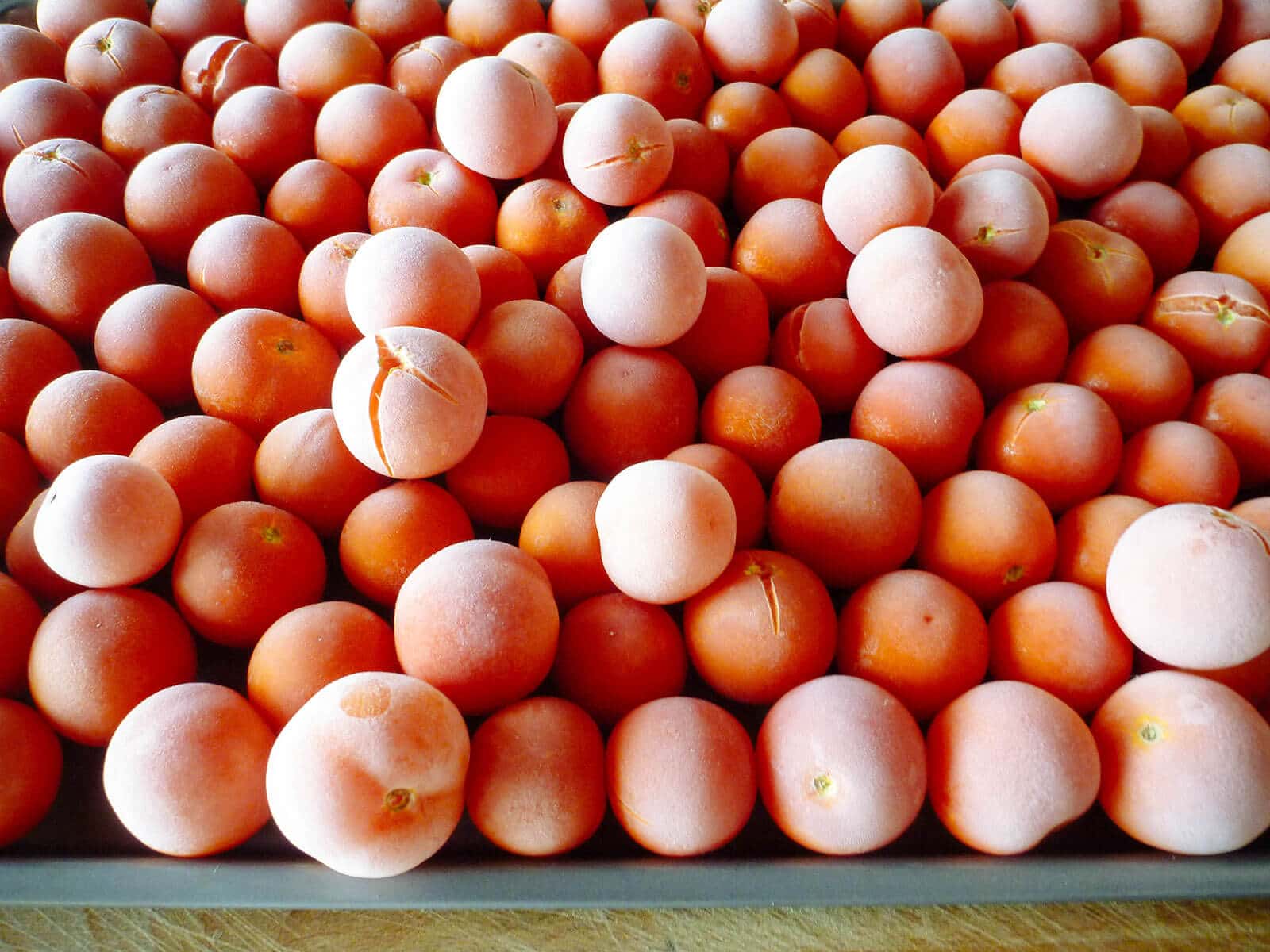
What to do with frozen tomatoes
Anywhere you might use stewed, diced, or crushed tomatoes from a can, you can use whole frozen tomatoes.
Thaw them in the fridge or on the counter at room temperature. If desired, you can peel the tomatoes before using—the skins slip off easily at this point with just your fingers.
Once thawed, you can add them to soups, stews, curries, or sauces, either whole or coarsely chopped.
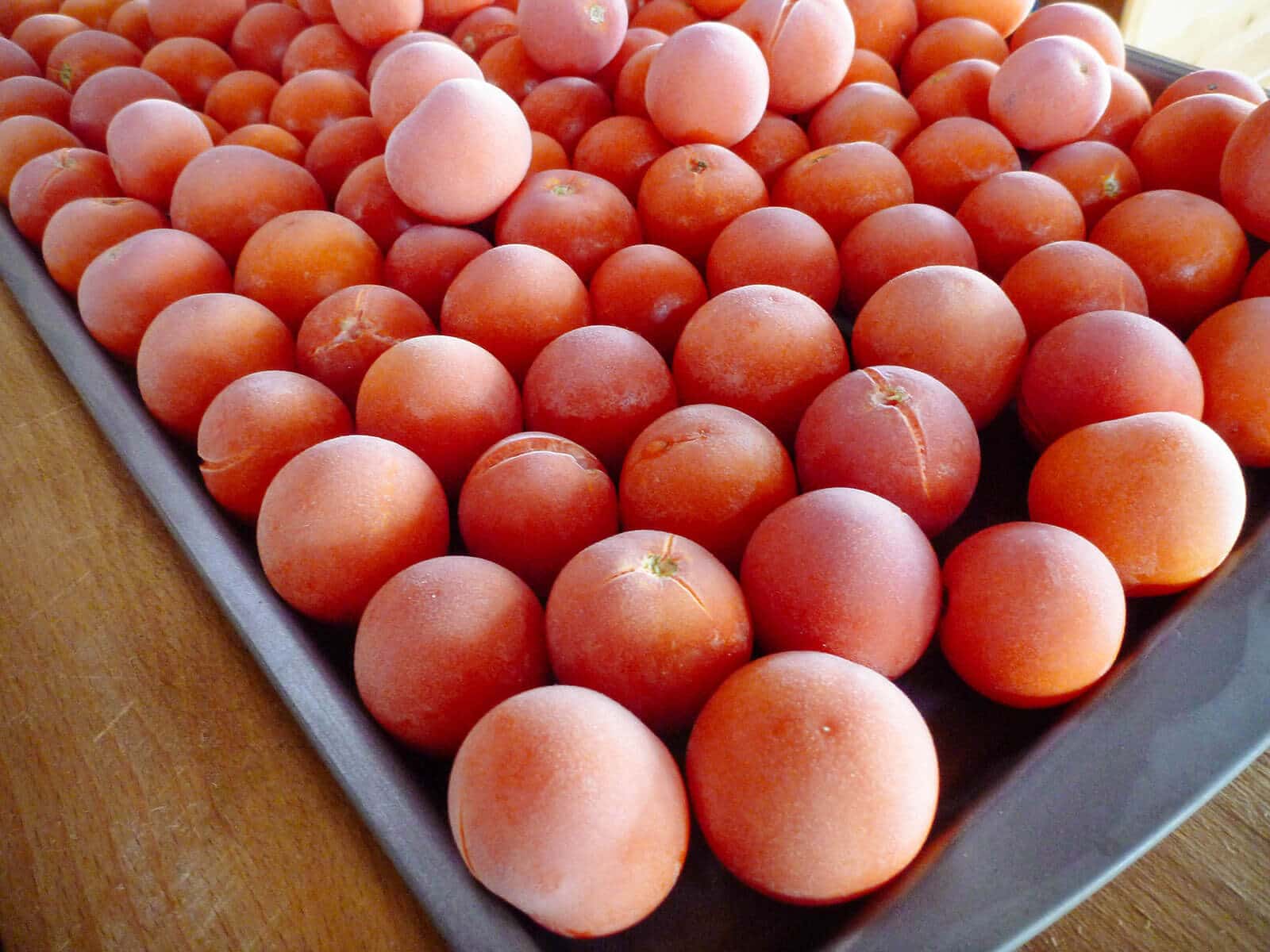
But what about blanching them?
Remember, this is a fuss-free way of preserving tomatoes. Despite countless recipes online telling you otherwise, you do not need to blanch tomatoes before you freeze them. It’s simply an unnecessary step.
Just freeze your whole tomatoes raw, with the skins on, and defrost what you want to use each time. Once you cook the tomatoes down or puree them, you won’t even notice they had skins on anyway.
Proof? Make my skins-on tomato sauce from scratch—and let me know how you like it!
Where to buy tomato freezing supplies
Arrow Reusable 32-Ounce Plastic Storage Containers | PH Plastic 32-Ounce Food Storage Containers | Dilabee Half-Gallon Plastic Storage Jars | Homelux Theory Reusable Silicone Storage Bags | Forid Food-Grade PEVA Reusable Freezer Bags | Qualeap Amber Stand-Up Reusable Freezer Bags | Ziploc Slider Stand-Up Freezer Bags with Power Shield Technology | Ziploc FLEX’NSEAL Freezer Bags | Ziploc Professional Double-Zipper Freezer Bags
This Is the Best Way to Freeze Fresh Tomatoes

Want a fuss-free way to preserve tomatoes—without canning, peeling, or blanching them? Here's the quickest and easiest method for freezing tomatoes whole.
Ingredients
- Fully ripe, whole tomatoes
Instructions
- Destem, wash, and dry your tomatoes whole, then spread them out in a single layer on a baking sheet.
- Place the baking sheet in the freezer until the tomatoes are frozen all the way through. This may take anywhere from 2 to 4 hours, depending on size.
- Once the tomatoes are rock hard, transfer them to a freeze-proof container or bag and put them back in the freezer.
- When you need fresh tomatoes in the middle of winter for your soups and stews, pull out as many as you need to thaw and return the rest to the freezer.
This post updated from an article that originally appeared on September 1, 2011.


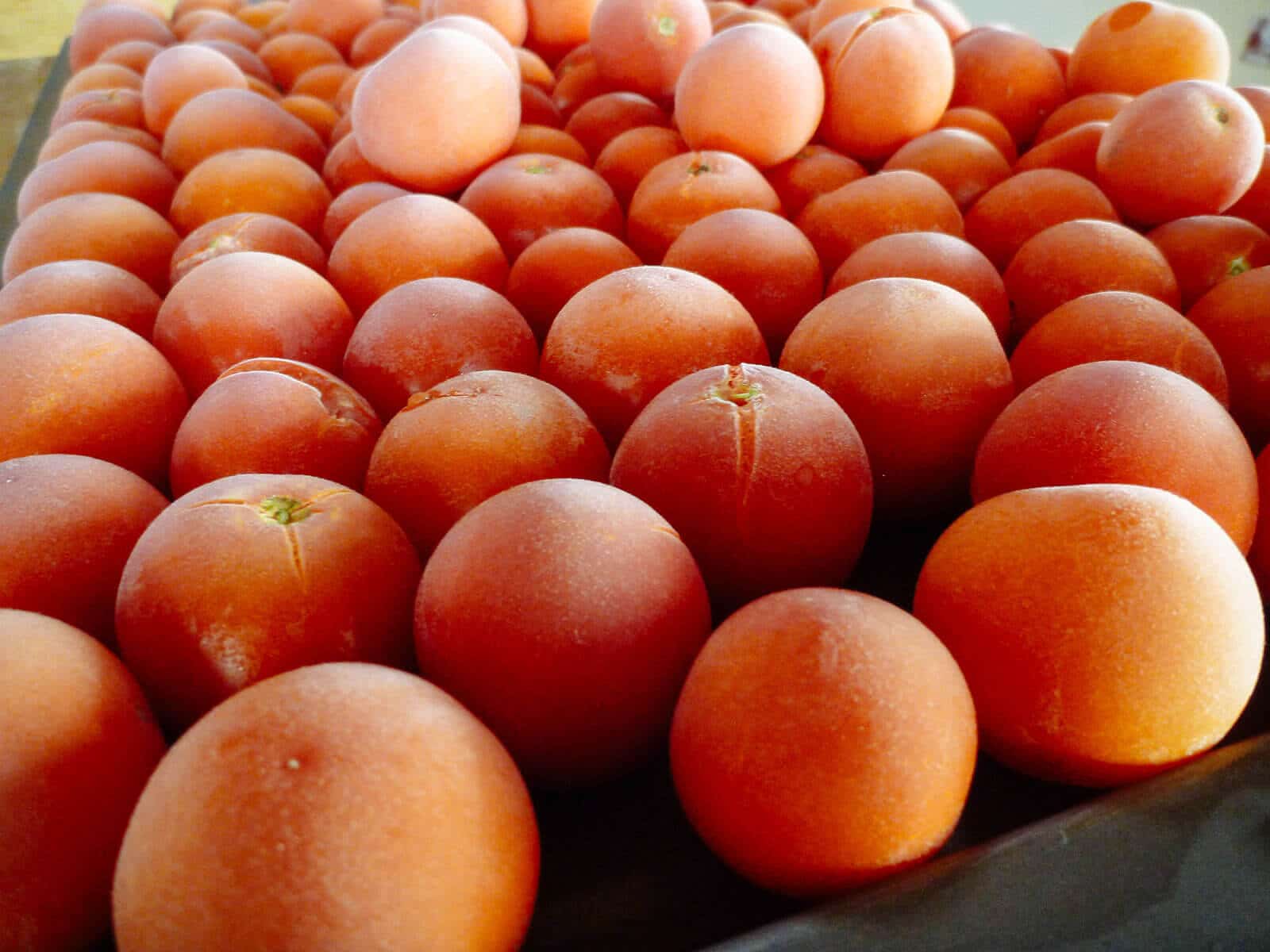
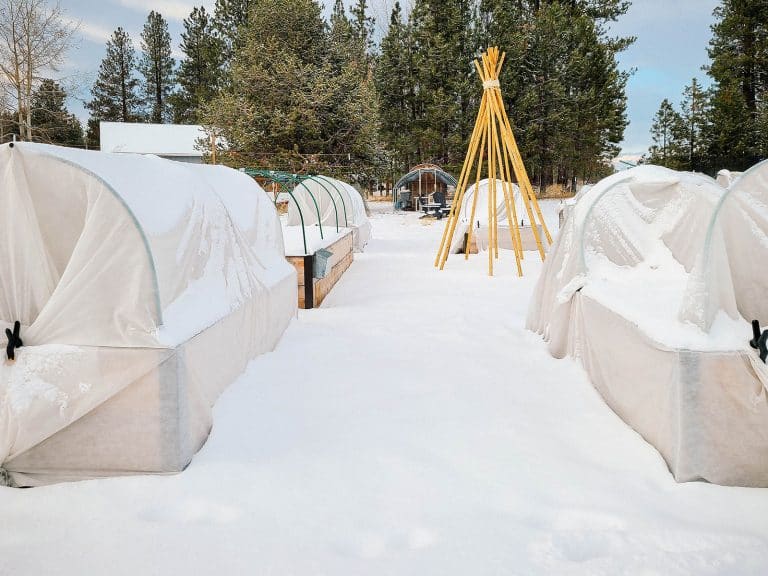


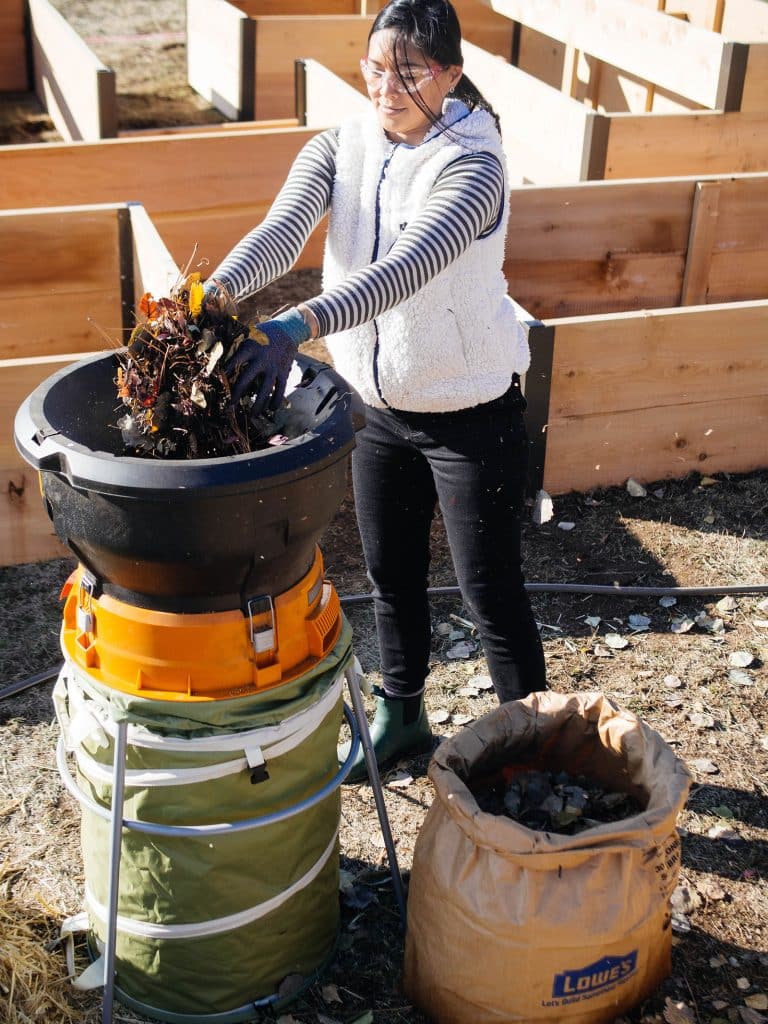









Can you freeze tomatoes then defrost to make chutney please
We just put washed and dried fresh tomatoes directly into freezer bags then into the freezer. They won’t stick together if they are dry, although, if they do, just pull them apart when you thaw them for cooking. Run hot water over them for a minute or so and the skins come right off. This uses a fraction of the time and energy needed for canning. But, you do need a freezer, so, whatever works best for you.
What I like to do, is roast my tomatoes with peppers (i use seconds), and spices, dribble oil on them, and roast it in the oven, then freeze them together; this is great for sauces, stews, etc., in the winter time.
What happens when you don’t have a blemish free tomato? I have a ton, but they all have some type of scab or bruise. They are perfect when I cut into them. What happens when they are frozen?
You can just cut the scab or bruise off before freezing them.
Rinse your tomatoes in water with a bit of vinegar. And then another rinse with water. That kills any bacteria on them. Works great for strawberries too. Strawberries will last a week just in the fridge if rinsed in vinegar. Wash with plain water after the vinegar rinse. No vinegar taste.
I throw the frozen tomatoes directly into soups, stews, chili &pepper steak.
Good stuff!
Could you then can them when you have enough from the garden? I love making salsa, but it seems like only a few are ready at a time…This may help me with the waiting, freeze as I go…thoughts?
Frozen tomatoes will become very mushy once they’re thawed. If you like to make smooth salsas (in a blender, for example), then it would work.
I wondered what to do with my last 10 lbs of ripe tomatoes. I had already canned 2 doz qts of stewed tomatoes. Two weeks before Dec & still had ripe tomatoes in Maine. It snowed today. My green toms have been inside turning red & they were ready to process.
Homegrown tomatoes this time of year, lucky you!
How long do the frozen tomatoes keep for in the freezer?
I’ve always used up all my frozen tomatoes within one year. I suppose it depends on whether yours get freezer burn or not.
You can easily freeze ant type of tomato. We buy bulk ” damaged” tomatoes from the farmer’s market, wash them, cut out any bad spots and freeze. I make homemade, scratch, tomato sauce during the winter with them. We use a food saver to vacuum pack te
Hem. I just drop the bag in hot water to begin thawing, once they start to soften, clip a corner of the bag and squeeze it into my cooking pot. The pulp goes in, while most of skins and seed stay in the bag. That part goes for worm feed, as we also do vermicomposting.
I wish I had a bigger freezer! (Or at least a second one…)
Can you treat Roma tomatoes the same way as cherry tomatoes?
I don’t see why not; they’ll just take longer to completely freeze through.
I’ve experienced more bitterness when using skin on, seeds in, cherry tomatoes so always use a balance of 50% cherry with larger varieties. Due to small size they have a higher % of skin/seeds to pulp.